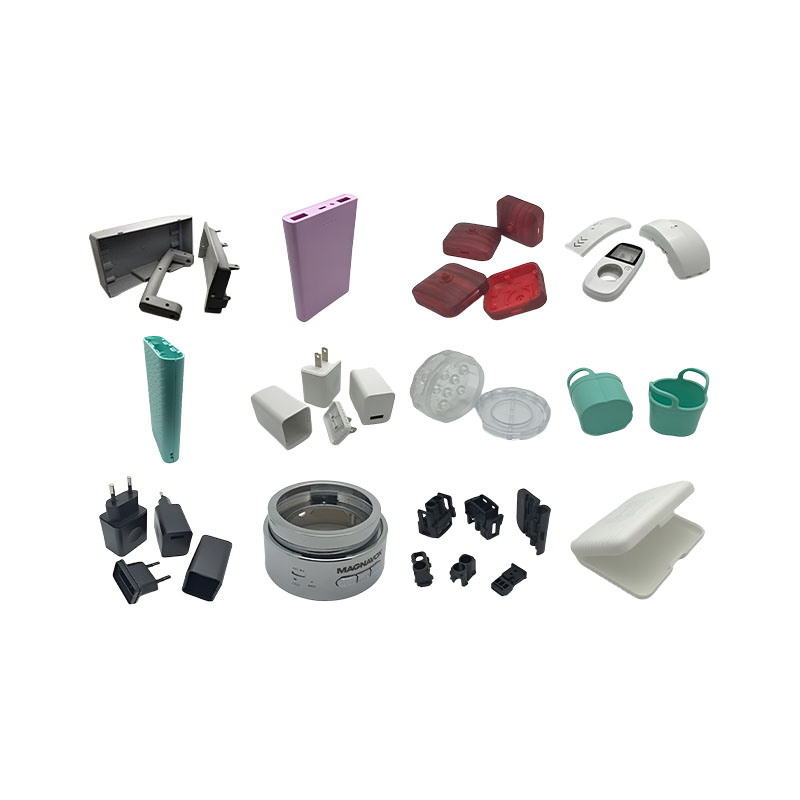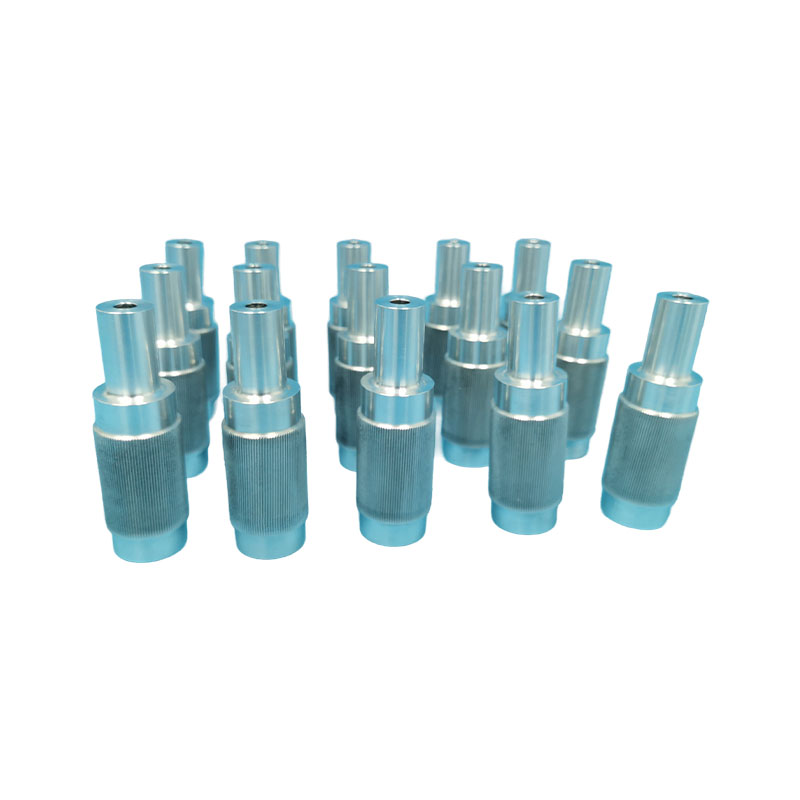Can aluminum CNC turning become an efficient art in precision manufacturing?
Release Time : 2025-11-12
In aerospace, new energy vehicles, consumer electronics, and high-end equipment industries, the demand for lightweight, high-precision, and complex structural parts continues to rise. As one of the core processes in aluminum product machining, aluminum CNC turning, thanks to the excellent machinability of aluminum alloys and the precise control of CNC technology, has evolved from a simple material removal process into a modern manufacturing art that integrates efficiency, precision, and surface aesthetics. Using a high-speed rotating tool as a brush and aluminum alloys such as 6061, 7075, or ADC12 as a canvas, it sculpts industrial masterpieces that combine function and beauty within micron-level tolerances.
Aluminum is an ideal material for CNC turning due to its unique physical properties. Aluminum alloys have low density (about 1/3 that of steel), good thermal conductivity, moderate plasticity, and low cutting resistance, allowing for stable chip removal and low tool wear even under high-speed cutting conditions. Especially common grades like 6061-T6 possess both good mechanical strength and excellent machinability, making them suitable for manufacturing rotating parts such as shafts, sleeves, joints, and housings. Furthermore, by optimizing tool geometry and cooling strategies, even high-silicon die-cast aluminum (such as ADC12) can achieve mirror-like turning results.
The core advantage of CNC turning lies in its programmed, high-precision, and repetitive manufacturing capabilities. Using G-code generated by CAD/CAM software, CNC lathes can automatically complete multi-process integrated machining of external diameters, internal holes, tapered surfaces, threads, grooves, and complex curved surfaces. With hydraulic or pneumatic fixtures, over 90% of feature machining can be completed in a single setup, avoiding multiple positioning errors. Modern turning centers further integrate a powered turret, Y-axis eccentricity, and sub-spindle, achieving "milling-turning composite" machining. This allows for the completion of non-rotational features such as drilling, milling, and tapping in a single setup, significantly improving the integrity and assembly accuracy of complex aluminum parts.
Surface quality is another highlight of aluminum turning. Thanks to the excellent ductility and low work hardening tendency of aluminum alloys, a smooth surface with Ra0.4–0.8μm can be directly obtained under reasonable cutting parameters (high speed, large feed, small depth of cut), with some finish turning processes even approaching grinding results. No subsequent polishing is required to meet the appearance requirements of finished parts, significantly shortening the process chain. For even higher surface finishes, it can also be integrated with ultra-precision machining (SPDT) for the manufacture of special aluminum parts such as optical mirrors or infrared windows.
Process flexibility and green manufacturing are equally prominent. The CNC system supports rapid changeover; the same machine can switch between different aluminum part programs within minutes, adapting to small-batch, multi-variety production modes. The widespread application of dry cutting or micro-volume lubrication (MQL) technologies significantly reduces cutting fluid usage, lowering waste fluid treatment costs and environmental pollution. Aluminum chips can be 100% recycled and smelted, achieving closed-loop resource utilization.
At a deeper level, aluminum CNC turning embodies the unity of engineering rationality and manufacturing aesthetics. A precision-machined aluminum alloy knob, perfectly sized, features a concentric circle texture that becomes part of its design language; an aerospace hydraulic connector boasts a mirror-like inner flow channel, its anodized outer wall revealing the true texture of metal. This expression of "form as function" represents the ultimate pursuit of high-end manufacturing.
In conclusion, aluminum CNC turning has long transcended the realm of traditional machining, becoming a highly efficient manufacturing paradigm integrating materials science, digital control, and surface engineering. It cuts lightweight metals at speeds of thousands of revolutions per minute, defining industrial precision with micrometer-level accuracy, forging a lightweight yet robust modern industrial framework amidst sparks and chips. When an aluminum part completes its final cut on the lathe, the gleaming metallic sheen is a vivid interpretation of the "precision, efficiency, and sustainability" manufacturing philosophy embodied by CNC technology—a victory not only in processing technology but also a perfect fusion of rationality and craftsmanship in modern manufacturing.
Aluminum is an ideal material for CNC turning due to its unique physical properties. Aluminum alloys have low density (about 1/3 that of steel), good thermal conductivity, moderate plasticity, and low cutting resistance, allowing for stable chip removal and low tool wear even under high-speed cutting conditions. Especially common grades like 6061-T6 possess both good mechanical strength and excellent machinability, making them suitable for manufacturing rotating parts such as shafts, sleeves, joints, and housings. Furthermore, by optimizing tool geometry and cooling strategies, even high-silicon die-cast aluminum (such as ADC12) can achieve mirror-like turning results.
The core advantage of CNC turning lies in its programmed, high-precision, and repetitive manufacturing capabilities. Using G-code generated by CAD/CAM software, CNC lathes can automatically complete multi-process integrated machining of external diameters, internal holes, tapered surfaces, threads, grooves, and complex curved surfaces. With hydraulic or pneumatic fixtures, over 90% of feature machining can be completed in a single setup, avoiding multiple positioning errors. Modern turning centers further integrate a powered turret, Y-axis eccentricity, and sub-spindle, achieving "milling-turning composite" machining. This allows for the completion of non-rotational features such as drilling, milling, and tapping in a single setup, significantly improving the integrity and assembly accuracy of complex aluminum parts.
Surface quality is another highlight of aluminum turning. Thanks to the excellent ductility and low work hardening tendency of aluminum alloys, a smooth surface with Ra0.4–0.8μm can be directly obtained under reasonable cutting parameters (high speed, large feed, small depth of cut), with some finish turning processes even approaching grinding results. No subsequent polishing is required to meet the appearance requirements of finished parts, significantly shortening the process chain. For even higher surface finishes, it can also be integrated with ultra-precision machining (SPDT) for the manufacture of special aluminum parts such as optical mirrors or infrared windows.
Process flexibility and green manufacturing are equally prominent. The CNC system supports rapid changeover; the same machine can switch between different aluminum part programs within minutes, adapting to small-batch, multi-variety production modes. The widespread application of dry cutting or micro-volume lubrication (MQL) technologies significantly reduces cutting fluid usage, lowering waste fluid treatment costs and environmental pollution. Aluminum chips can be 100% recycled and smelted, achieving closed-loop resource utilization.
At a deeper level, aluminum CNC turning embodies the unity of engineering rationality and manufacturing aesthetics. A precision-machined aluminum alloy knob, perfectly sized, features a concentric circle texture that becomes part of its design language; an aerospace hydraulic connector boasts a mirror-like inner flow channel, its anodized outer wall revealing the true texture of metal. This expression of "form as function" represents the ultimate pursuit of high-end manufacturing.
In conclusion, aluminum CNC turning has long transcended the realm of traditional machining, becoming a highly efficient manufacturing paradigm integrating materials science, digital control, and surface engineering. It cuts lightweight metals at speeds of thousands of revolutions per minute, defining industrial precision with micrometer-level accuracy, forging a lightweight yet robust modern industrial framework amidst sparks and chips. When an aluminum part completes its final cut on the lathe, the gleaming metallic sheen is a vivid interpretation of the "precision, efficiency, and sustainability" manufacturing philosophy embodied by CNC technology—a victory not only in processing technology but also a perfect fusion of rationality and craftsmanship in modern manufacturing.







